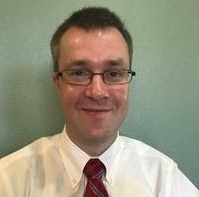
A Short Guide To Debt Free Spending
Step 1: Create a spending plan and evaluate your finances
Many advise reviewing your finances from the last three to five years. (Note: If you already have an idea of this, skip to Step 2.) To create your spending plan, you will need to firmly define your budget first. Check out this step-by-step blueprint on how to accurately budget your money. Then, what is left over will be used toward your monthly spending.
Step 2: Learn how to live well with the cash you have
In a January 14, 2013, podcast interview with finance speaker Gerri Detweiler, JoAnneh Nagler, author of The Debt Free Spending Plan, said that before starting anything else, those in a lot of debt need to learn how to live well on the cash they have instead of tackling their debt.
“Pay the minimum for the first three to six months and reassess your debt later,” she said.
However, Nagler stressed that she is in no way saying not to leave your debt alone or to not pay toward your debt. Whether you have $14,000 or $14 million, you need to develop positive spending habits instead of moving money from one card to the next.
The game changer, she said, is knowing how to live with your money with integrity.
Step 3: Reduce Your Spending (But Not How You Think)
Nagler, who is also a contemporary artist and yoga instructor, also pointed out that we tend to spend too much, particularly when grocery shopping or going out for coffee. Another example includes buying lunch at work instead of packing from home. This does not imply, though, that we should eliminate all of life’s simple pleasures. In fact, Nagler noted that it’s not realistic to never go out to dinner again until your debt is paid off, especially if you are so far into debt, and she speaks from experience.
Instead, she advised reducing the amount you spend instead of completely cutting off everything. For example, her husband went from spending around $150 per month to roughly $40 per month at coffee shops by getting regular coffees instead of fancy lattes and reducing the number of times he went each month. Through their combined efforts of decreasing how often they went out to lunch and so on, they were actually able to go on five trips that year while also putting money toward their debt.
Grocery shopping is another area where we tend to overspend. Rather than buying food and items for the month (unless they are household essentials where you know you’ll save, like toilet paper), purchase your groceries week to week. Also, avoid shopping at higher-end and warehouse stores, Nagler suggested. This is one of the biggest areas we can focus on for improvement in order to work toward our debt.
Step 4: Stop Stealing from Yourself
Lastly, stop stealing from yourself. What this means is to stop creating more debt for yourself, particularly in moments of impulse. During her interview, Nagler used the example of paying for a top-notch massage therapist to help alleviate the stress the comes with your debt. When seeking relief from your debt, find cheaper ways to meet your needs. Her tip is to sign up for one at a massage school instead, where they are often low-cost or even free from students in training.
In this way, we are preventing ourselves from having cash for savings, for paying toward our debt, or even for that $25 shirt you’re eyeing up online.
Step 5: Avoid Quarterly and Annual Payments
The last tip Nagler mentioned in her interview was to avoid quarterly and annual payments. Even though it is often advertised paying for bills quarterly or yearly will save you money, opt for monthly payments instead. You’ll be able to track your monthly finances better by knowing exactly how much you will have left over after bills each month. This will not only keep you accountable, but it will create healthy budget habits.
Getting rid of debt is not always about just putting money toward it; it’s about spending wisely and facing our financial woes head on. The longer you put off taking action, the longer the debt hangs around and, thus, continues to cause stress.
Have some tips for remaining debt free? Share them with our forums community.

James Hendrickson is an internet entrepreneur, blogging junky, hunter and personal finance geek. When he’s not lurking in coffee shops in Portland, Oregon, you’ll find him in the Pacific Northwest’s great outdoors. James has a masters degree in Sociology from the University of Maryland at College Park and a Bachelors degree on Sociology from Earlham College. He loves individual stocks, bonds and precious metals.
Comments